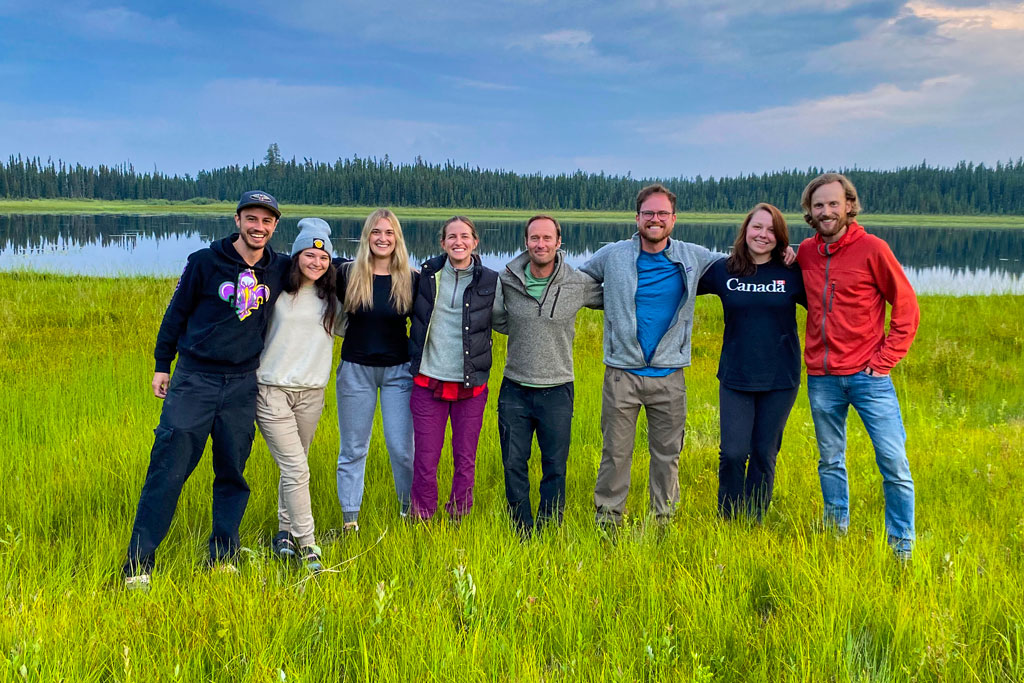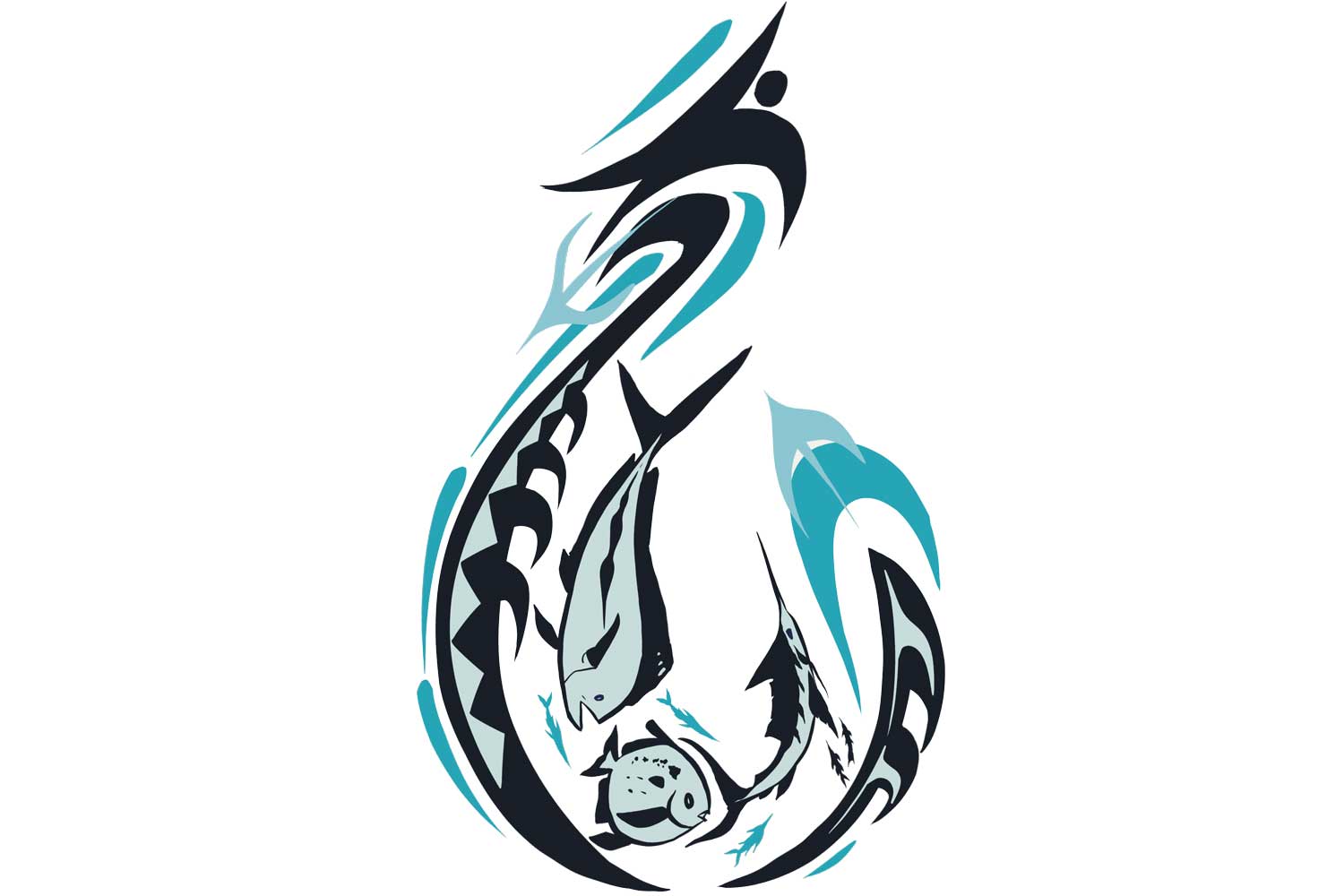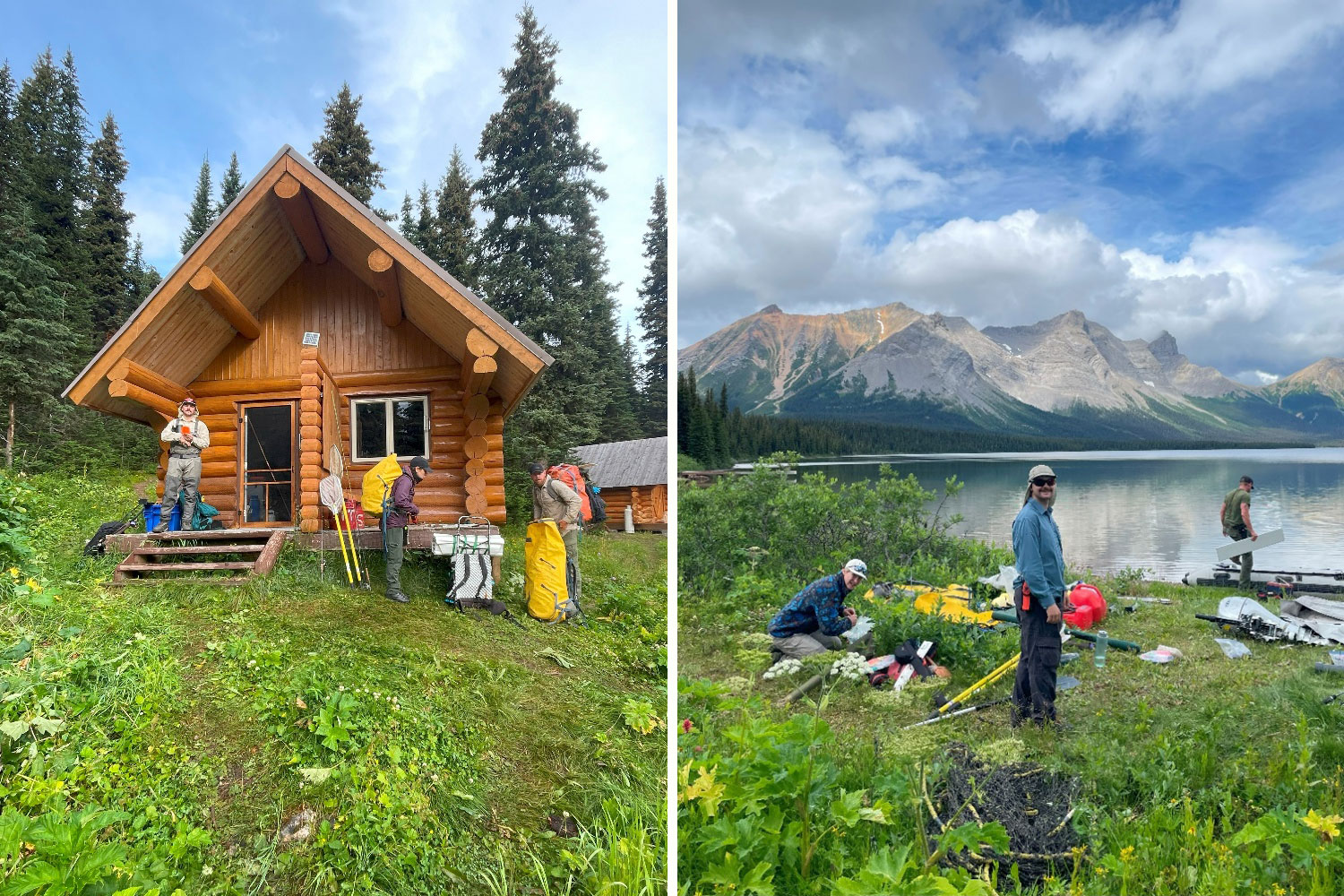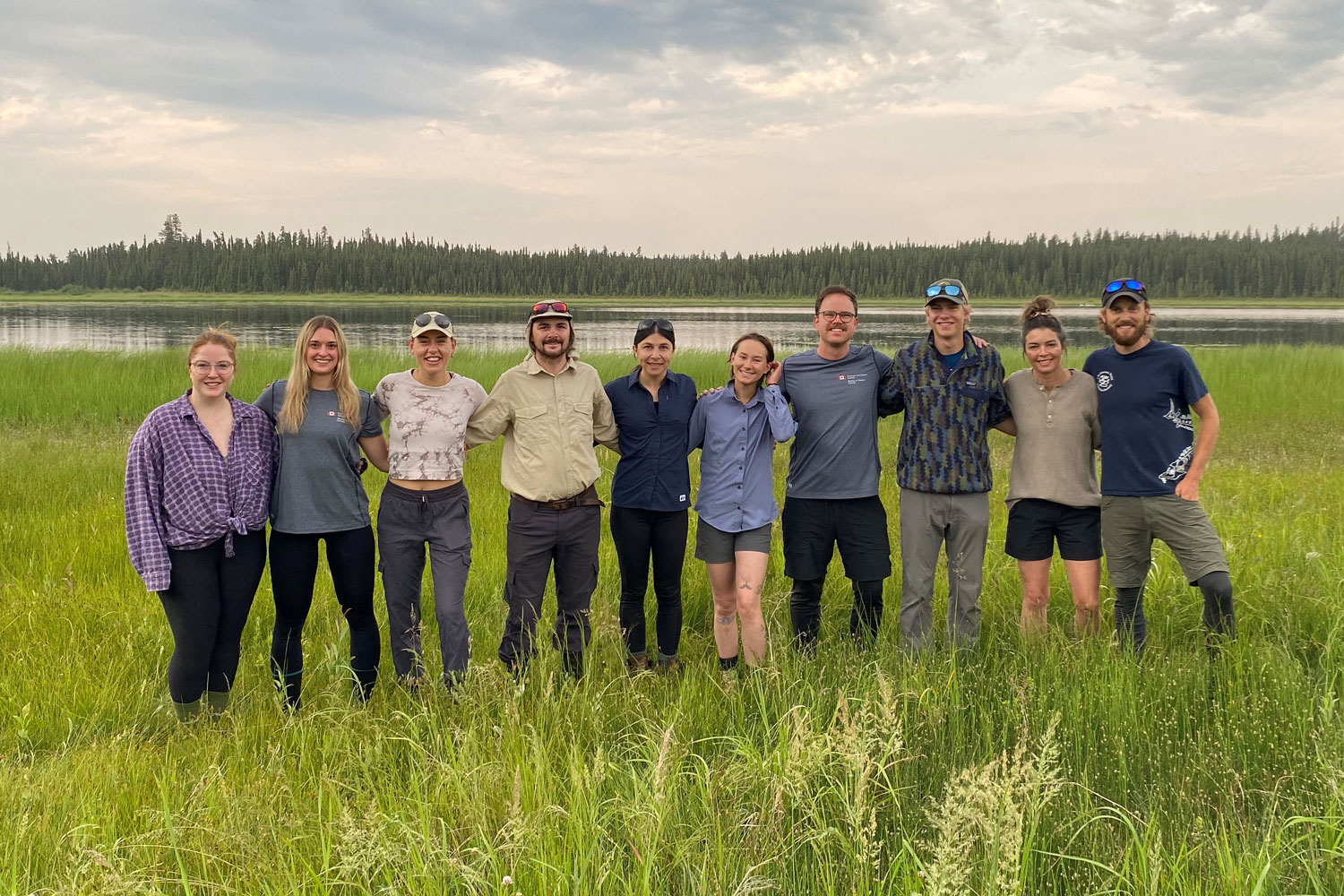
Left to right: Jamie Card, Erin Cawthorn, Claire Allore, Sam Chevalier, Dr. Analisa Lazaro Cote, Sarah Desrosiers-Vaillancourt, Matthew Teillet, Parker Makkreel, Brittany Schmidt, and Dr. Ben Kissinger.
By Claire Allore
The fRI Research Water and Fish team, along with collaborators from Fisheries and Oceans Canada, Alberta Environment and Protected Areas, University of Calgary, and University of Manitoba have been hard at work during July, contributing to a multi-year fish population study. In total, 14 staff helped with sampling this summer.
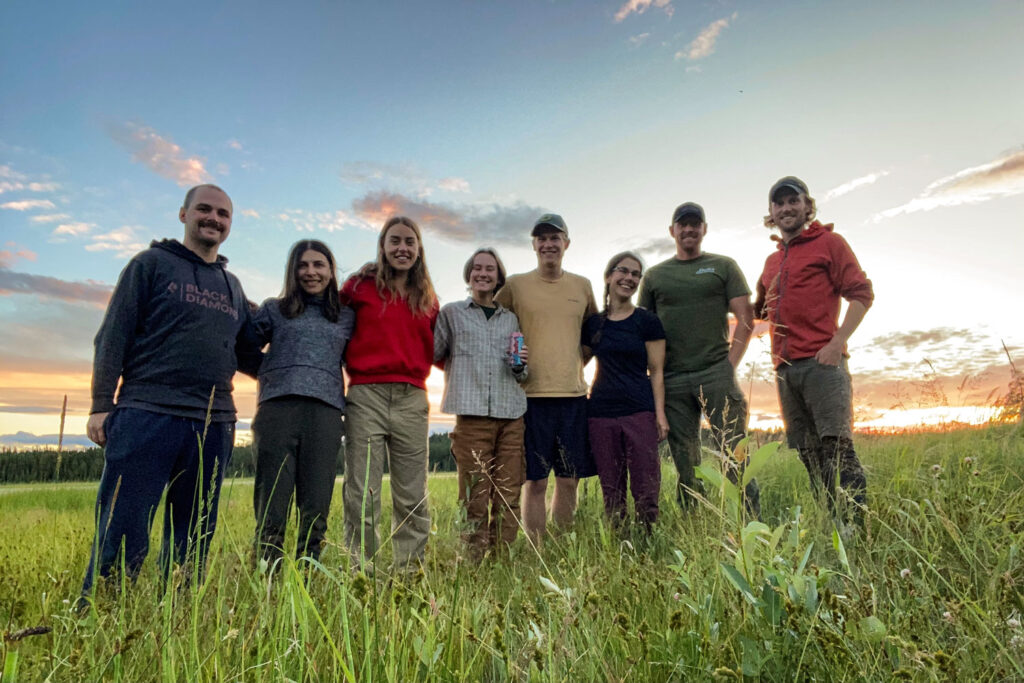
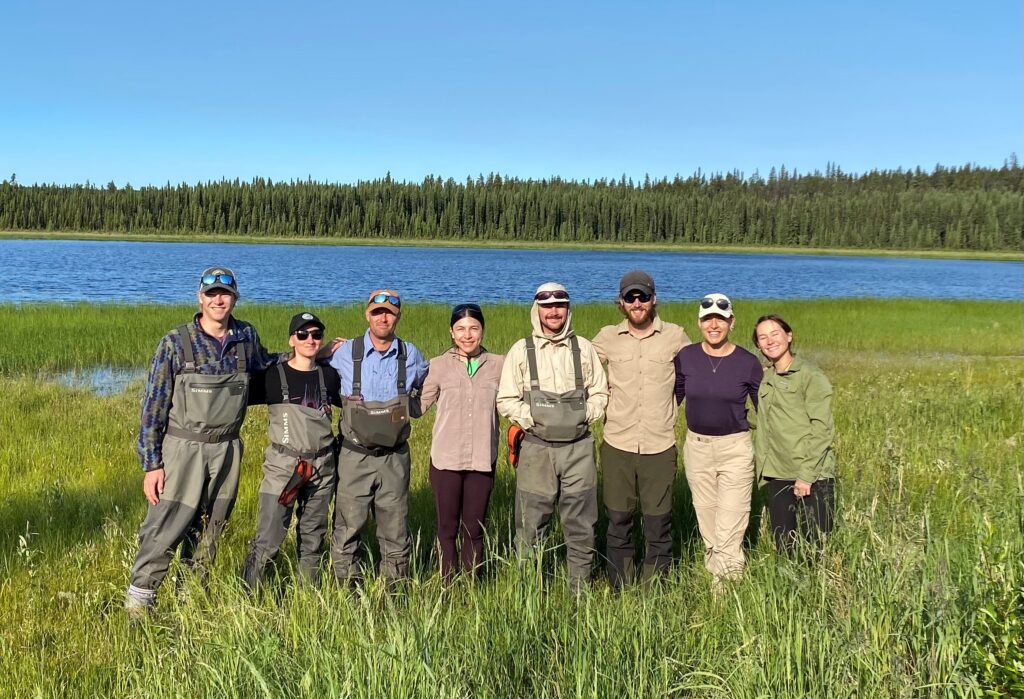
The aim of this field work was to sample fish from 172 sites that were assessed about 20 years ago in a 2005 study by Travis Ripley, Garry Scrimgeour, and Mark Boyce. These sites within the Kakwa watershed are of particular interest because they can contain bull trout, one of Alberta’s Species-at-Risk. Other game species like arctic grayling, mountain whitefish, and rainbow trout can be found in these rivers.

Keeping tabs on species occupancy, relative abundance, and diversity in these locations is important; especially because this watershed is under the influence of multiple cumulative stressors. Potential stressors to fish populations include: sedimentation, loss of connectivity, habitat loss, angling pressure, poaching, climate change, and non-native species. Understanding how species are affected by external factors can help us to predict where we will find these species in the future and attempt to mitigate potential impacts.
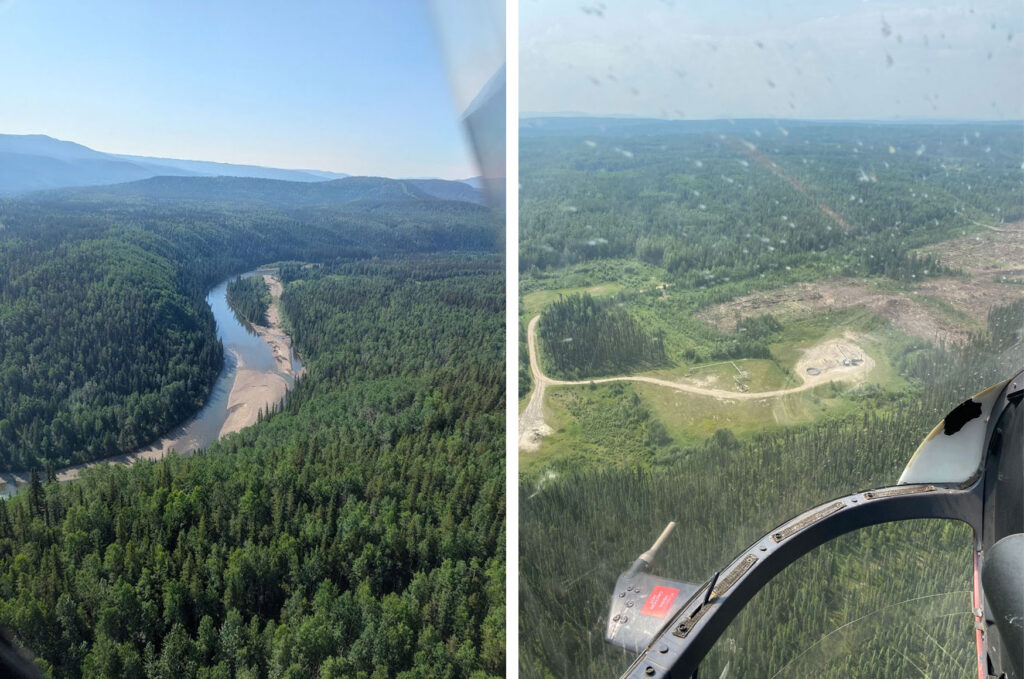
Like in Ripley’s study, we sampled 300 m transects at each site. We identified and counted each captured fish species and recorded the length of all fish before returning them to their streams. At every location we also collected data on abiotic factors known to influence fish distributions (i.e. temperature, stream width and depth, and substrate).
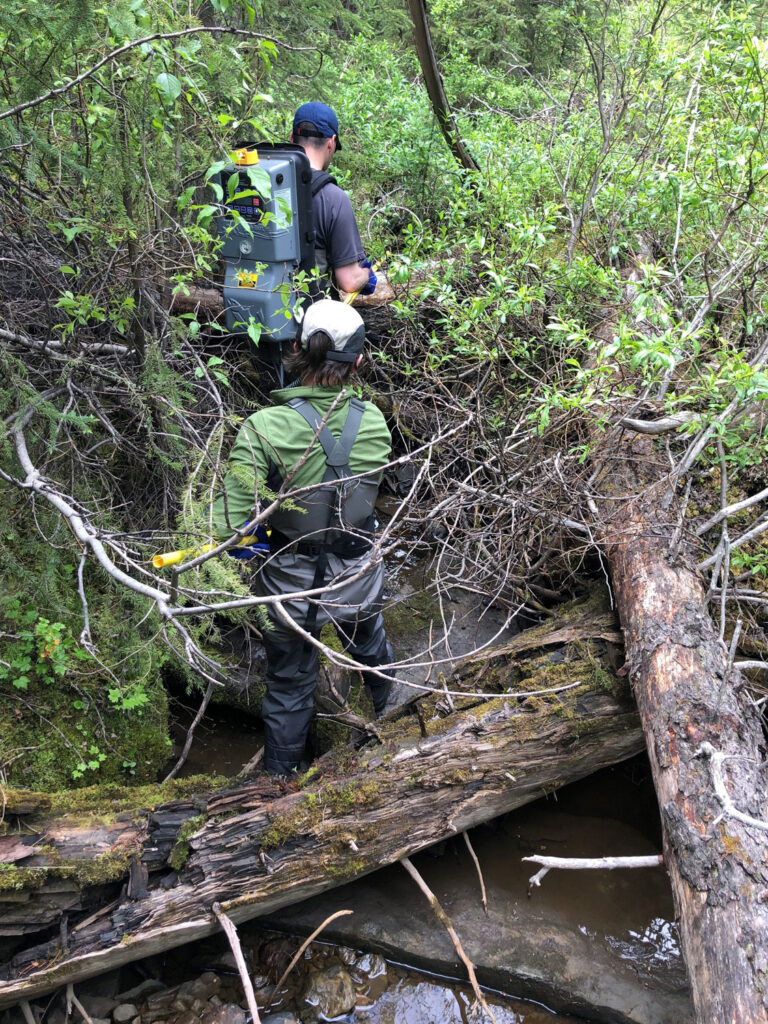
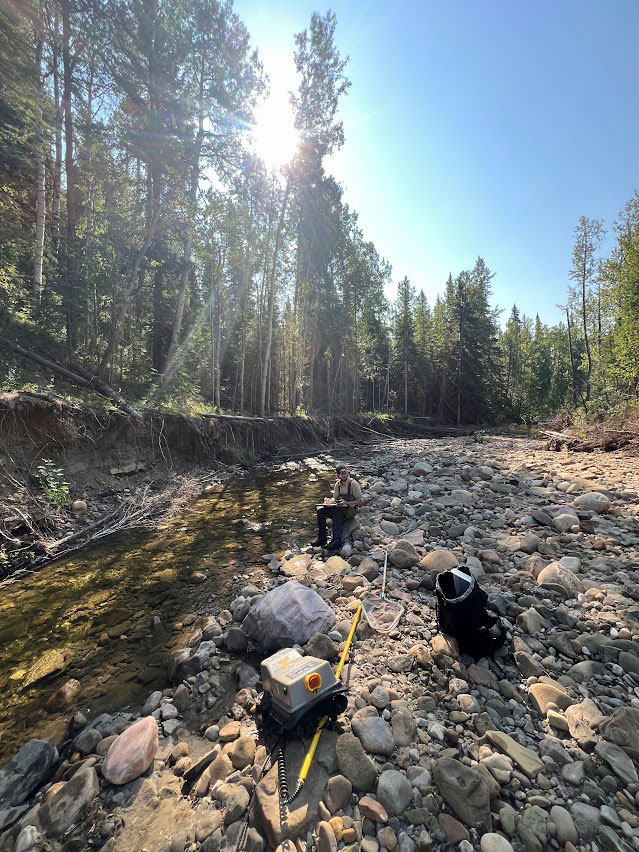
Right: preparing to sample by first recording temperature, location and wetted width. Photo: Jamie Card.
Our team had to use a combination of flying, hiking, and driving to reach each location and we were faced with a wide variety of streams ranging from first to fifth order. Previous sampling of this watershed took over four years to complete but with the help of collaborators and a helicopter, our team was able to complete our sampling in approximately one month.

Overall, our collaborative effort in this multi-year study will help with future predictions of how, where, and if fish distributions and populations are changing within the Kakwa River watershed and if so, how these changes are linked to activities on the landscape. A secondary objective of this study is to help determine the effectiveness of different metrics (e.g., occupancy vs. abundance) for assessing riverine fish populations and determining the most efficient sampling designs for assessing trends over time.







